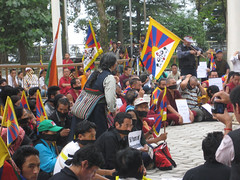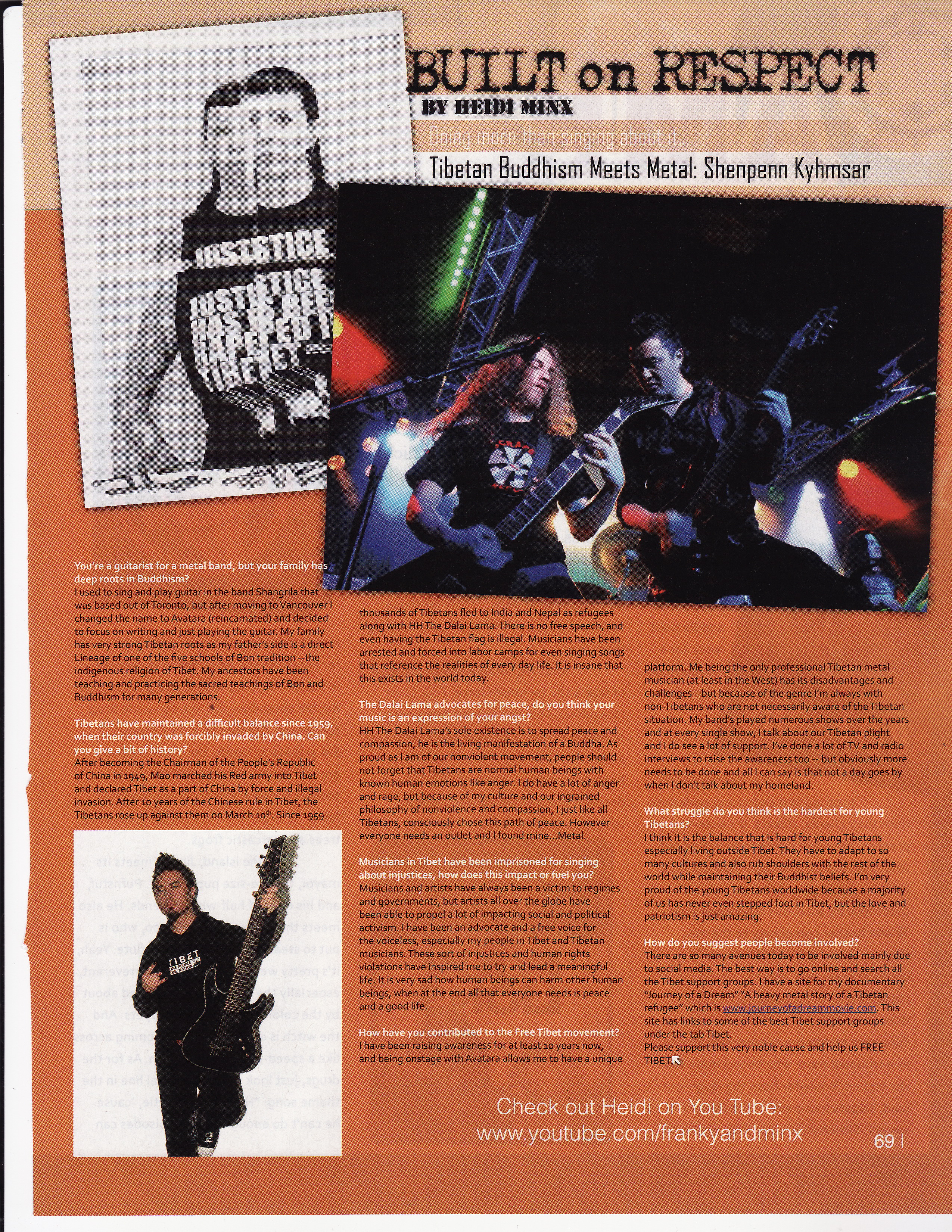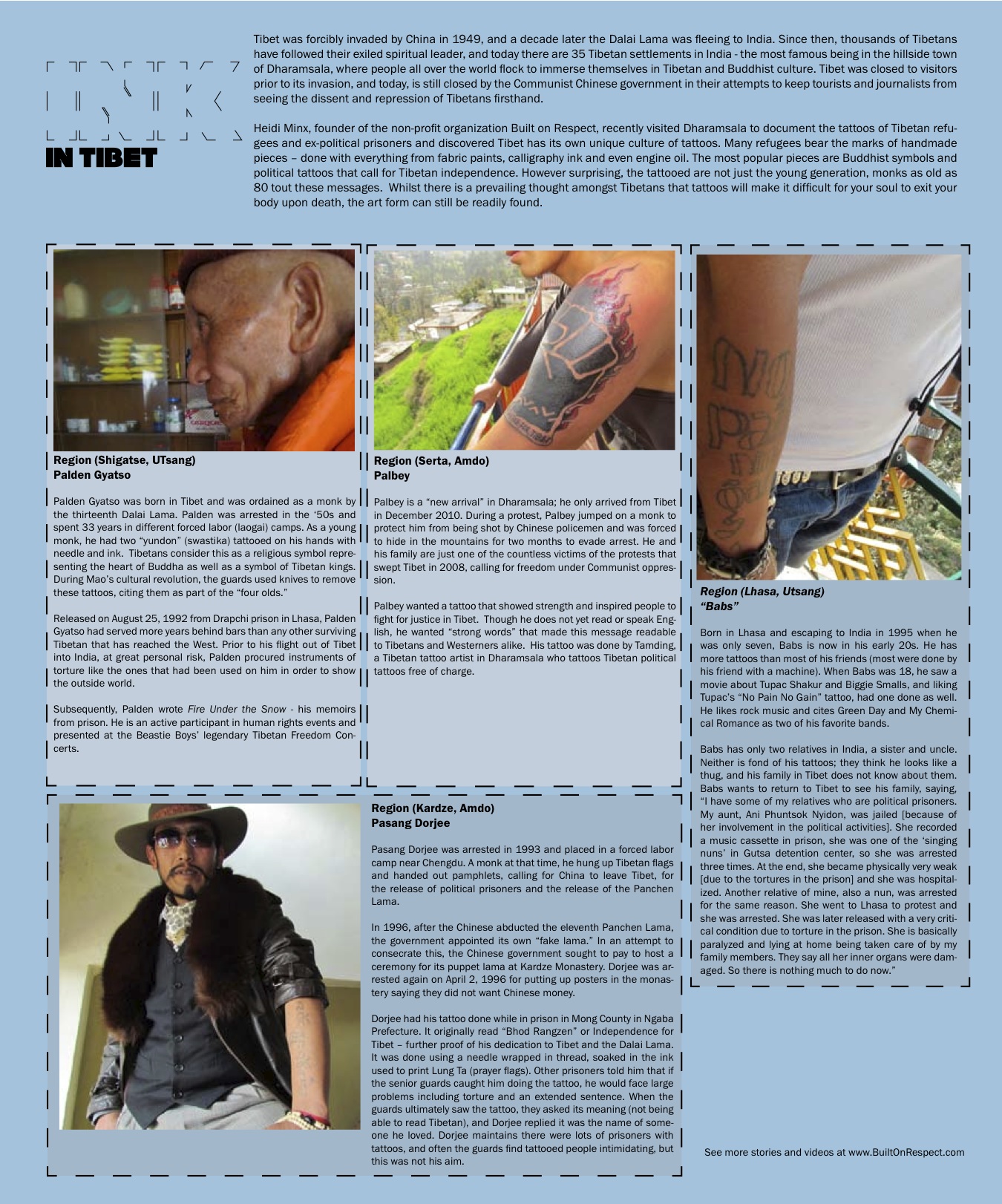PRC’s Birthday
This morning, instead of class, the Geshe’s and I watched the celebrations in Beijing for the People’s Republic of China’s 60th birthday. 60 is a more significant number than 50, as China uses the lunar calender.
We watched it for about 2 hours. It was massive, but so sad and scary. Military tanks, new weapons – all were on display. It is estimated that there are 22 million people in the Chinese army. Here is a clip from the parade rehearsals, I suggest you watch it.
As we were watching, we could hear the echos of the protesters outside Geshela’s room by the temple — urging the UN to pay attention.
Tibetan Youth Congress, Gu Chu Sum, Tibetan Women’s Association and Students for a Free Tibet were all involved.

Earlier this week, there were vigils for the film maker-cum-political prisoner Dhundup Wangchen, protests in NYC as China’s president Hu Jintao addressed the UN. It was also GuChuSum’s 18th anniversary.
I just compiled a small video of pictures and video to show some footage from here.
To learn more about the impact of the birthday on Tibet, below is a release from International Campaign for Tibet:
China tightens screws on Tibet for October 1st 60th anniversary
New details of ongoing protests and political prisoners
ICT report, October 1, 2009
As people throughout China celebrate the 60th anniversary of the founding of the People’s Republic of China, in Tibet intense security and control measures remain in place following a wave of protests that swept the plateau since March 2008. In Lhasa and other cities, Tibetans have been compelled to participate in birthday celebrations for the PRC despite widespread fear and tensions, and military patrols have been stepped up. There have been restrictions on foreign tourists from entering the Tibet Autonomous Region (TAR) until a week after the celebrations are over.
On coming to power on October 1, 1949, Mao Zedong and the Communist Party leadership made it clear that the last remaining task for the victorious People’s Liberation Army was the ‘liberation’ of Tibet. Sixty years on, bold protests against Chinese rule have been met by an often brutal crackdown and the intensification of political education campaigns.
Mary Beth Markey, ICT Vice President for International Advocacy for ICT, said today: “The critical distinction for Tibetans in this 60th anniversary is that the Chinese Communist Party brought revolution to China and occupation and oppression to Tibet. The Chinese authorities understand this distinction and that is why security and control measures not parades are everywhere throughout Tibet today. The Tibetans, many of whom have been taking great risks to demonstrate their loyalty to the Dalai Lama, will celebrate only when he returns to Tibet.”
Over the past year, the Chinese government has engaged in a cover-up of the torture, disappearances and killings in Tibet. Despite the risks, protests have continued. ICT has logged a total of 235 protests in Tibet of varying intensity since March 2008, but this is likely to be a minimal number. Details of these protests are reported in ICT’s new protest log at: www.savetibet.org/action-center/protest-logs
A list of 735 Tibetans detained since March, 2008, many now serving long prison terms, is included with this report, although the actual number of Tibetans still in detention is not known.
New ICT data on the protests now online at http://www.savetibet.org/ shows that there was a greater involvement of farmers, laypeople, students, children, and nomads than in previous protests, when political demonstrations tended to be dominated by monks and nuns. The 2008 protests were the first significant protests to occur during the internet age, and mobile and internet communications facilitated the spread of news about protests in other areas and led to their geographical spread across most Tibetan areas of the PRC.














